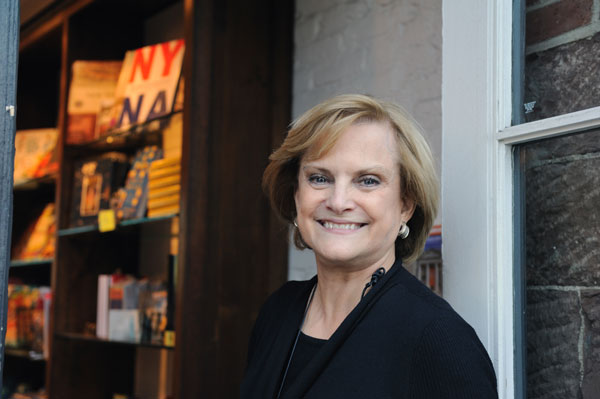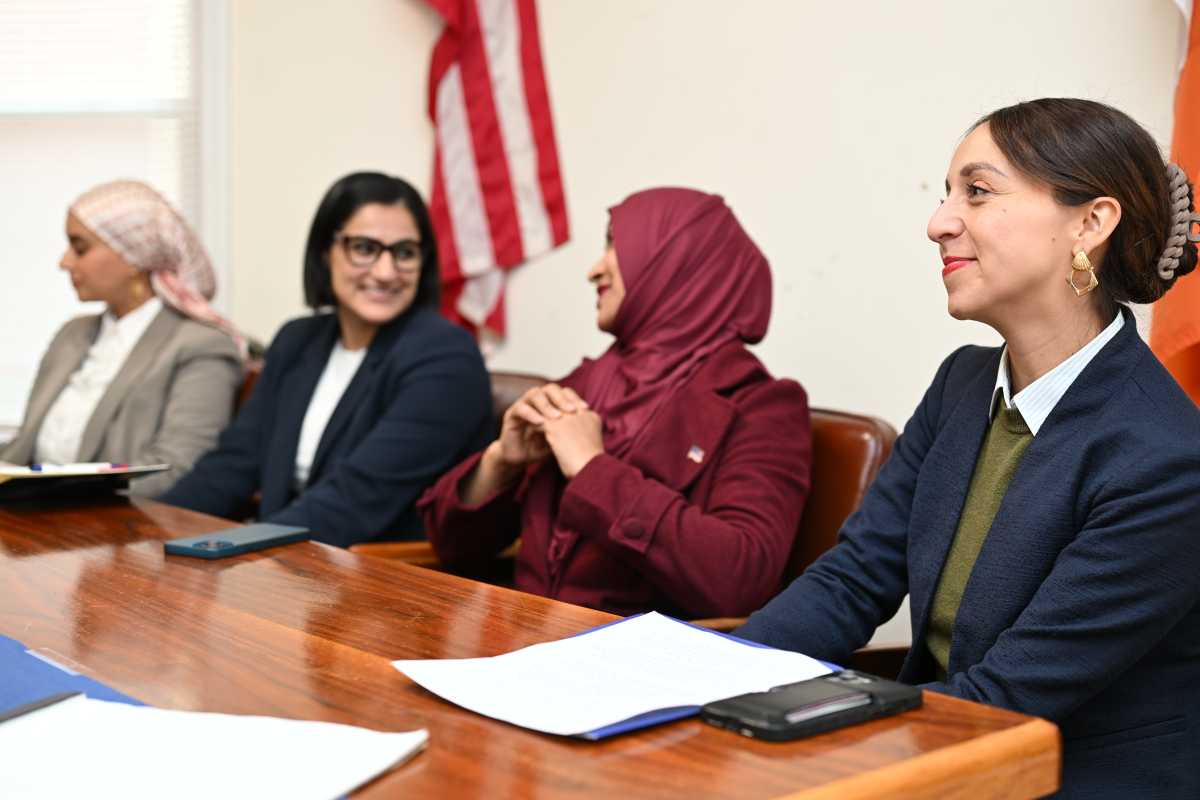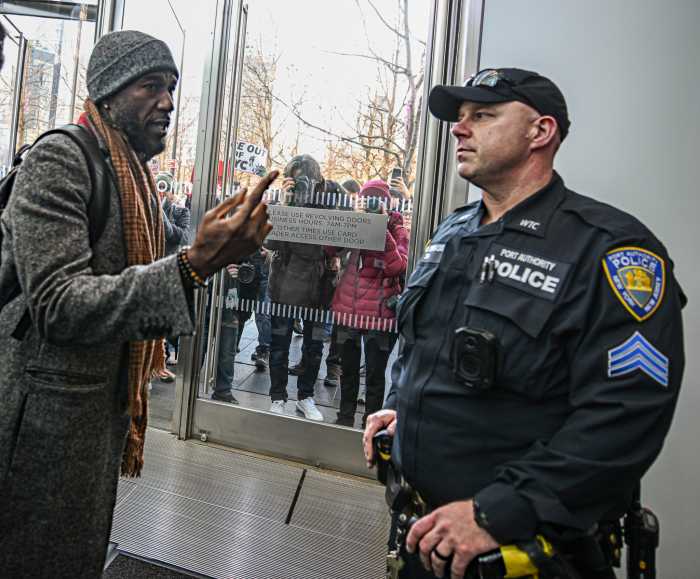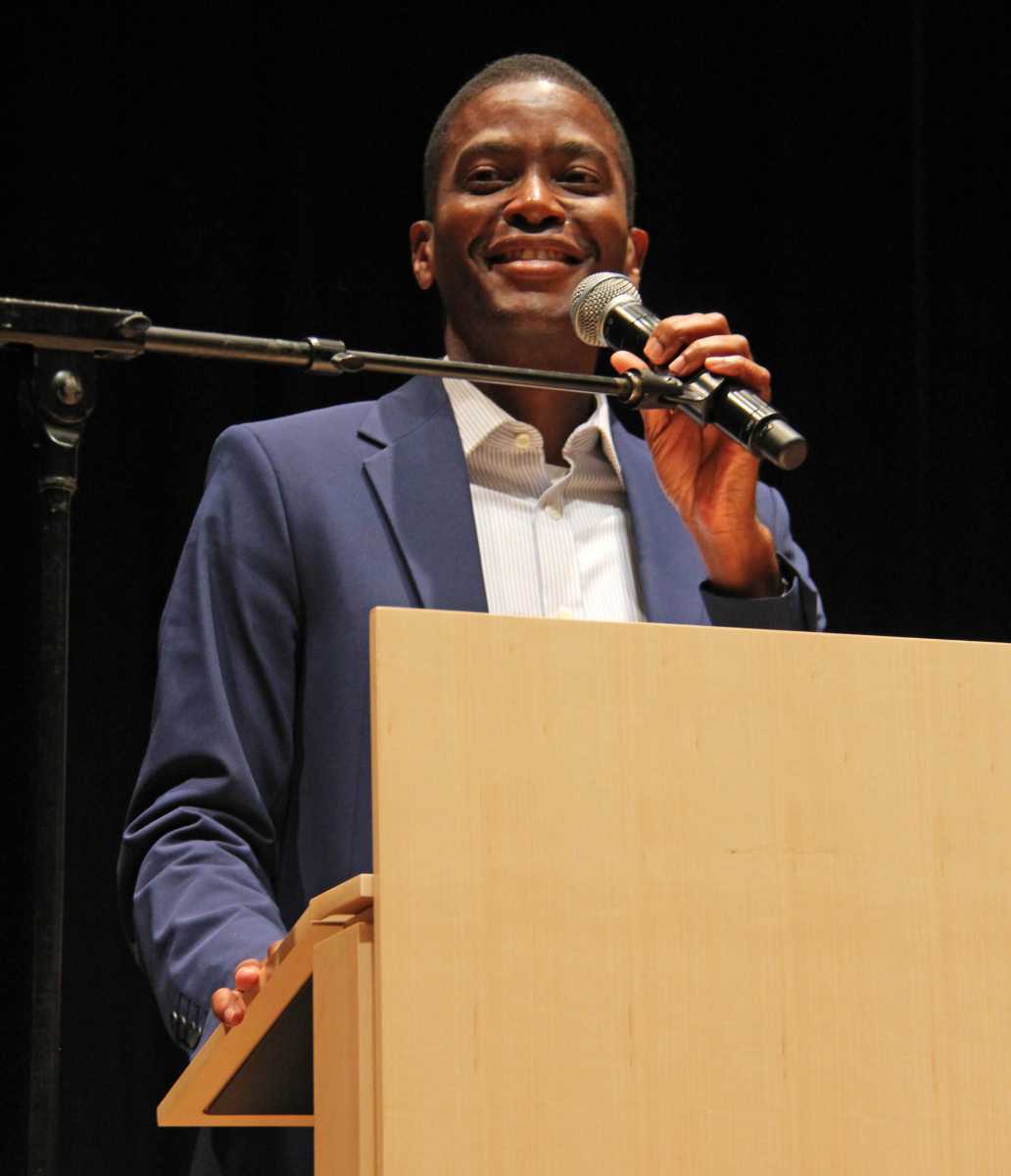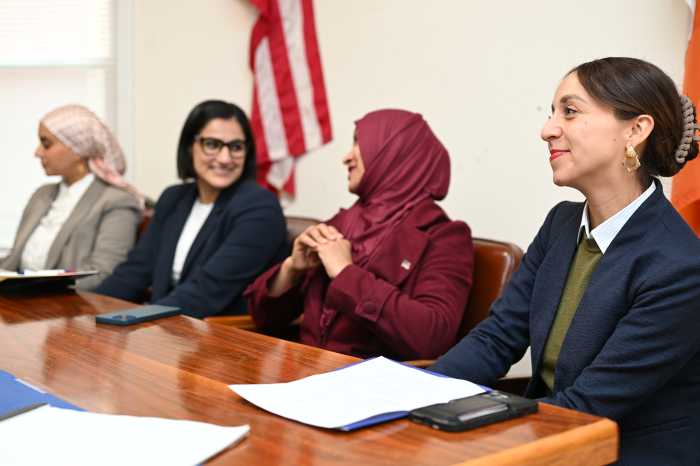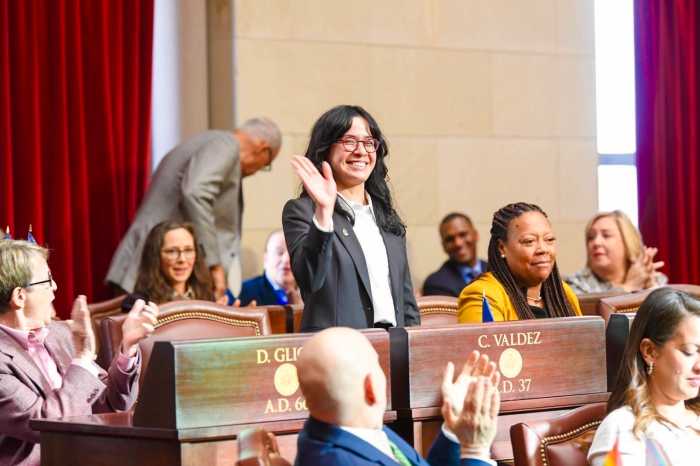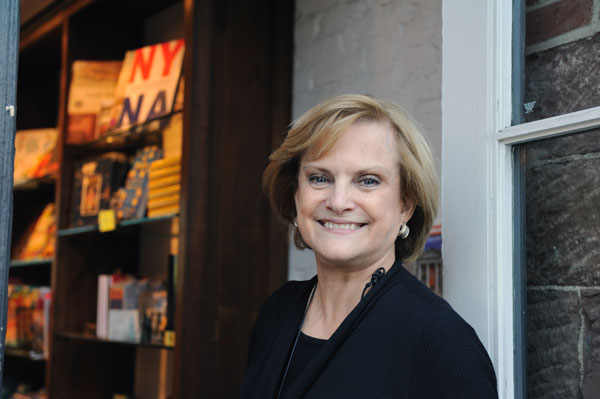 [/media-credit]
[/media-credit]
- Susan Henshaw Jones, Ronay Menschel Director of the Museum of the City of New York, is now also director of the South Street Seaport Museum, which has reverted to its original name after having briefly been called Seaport Museum New York.
BY TERESE LOEB KREUZER | The banner outside the museum at 12 Fulton St. still says “Seaport Museum New York,” but it is no longer accurate. On Nov. 2, the name of the museum reverted to the “South Street Seaport Museum” — the name by which it had been known for most of the 40 years since it was founded. The museum’s old logo depicting a sailing ship and the early 19th-century buildings of Schermerhorn Row was also resurrected.
“The name was legally changed by my predecessors but it was a very short-lived passage and everybody that we run into feels that the earlier name — South Street Seaport Museum — has the greater meaning and connection with the buildings and the ships and the mission that they know from before,” said Susan Henshaw Jones, Ronay Menschel Director of the Museum of the City of New York and for the last month, also the director of the South Street Seaport Museum.
In an agreement signed in two parts — the first on Sept. 29 and the second on Oct. 6 with the New York City Economic Development Corp., the Museum of the City of New York agreed to take on the management of the foundering museum at the Seaport for up to 18 months.
The Lower Manhattan Development Corporation has allocated $2 million to the museum to help fund the first year. Jones said that additional funding for the next six months of the provisional period was “yet to be discussed.”
“We’ve done a lot in a month,” Jones said. “We’ve reopened Bowne & Co. [at 211 Water St.], we’ve hired two archivists to reorganize the library, which they will do with the assistance of Norman Brower [former curator and historian at the museum], and we’ve hired a waterfront director. He is the first step to getting the public back on the boats and getting them repaired.”
Jonathan Boulware, the newly hired director of ships, comes to the South Street Seaport Museum from Sound Waters, a maritime non-profit organization based in Stamford, Conn., that specializes in environmental education and marine studies. He will be responsible, in part, for getting the South Street Seaport Museum’s working vessels — the Pioneer, the W.O. Decker and the Lettie G. Howard — in condition so that they can once again carry passengers beginning in April, 2012. They were sidelined this past season because of the museum’s management and financial difficulties.
Boulware joins a staff at the Seaport that now numbers 15 people, some of them, also employed at the Museum of the City of New York.
“We’ve committed in the first year over a million dollars in donated staff services including me and lots of other people,” said Jones, who splits her time between the two museums.
Franny Kent is also among those with responsibilities at both museums. At the Museum of the City of New York, she heads the Schwartz Children’s Center. At the South Street Seaport Museum, she is organizing programs for school groups and for the public. The first of the school groups will arrive on Nov. 21. “We have 40 booked for the next few months,” Kent said. A program called “Mini-Mates” for children aged 18 months to three years will start on Nov. 17 and meet on Thursday mornings.
Kent said that the school programs will utilize the Seaport museum’s collections including “objects that students can touch to teach them about New Amsterdam history in addition to the kinds of jobs and responsibilities that a sailor would have had on one of the large ships just outside the windows. Right now our plan is to show them the ships and then use objects to teach them about what would have been happening on the ships.”
Mini-Mates for young children and their caregivers will teach about boats, water and animals utilizing arts and crafts, movement and free play. Pre-registration is required. (Email reservations@seany.org or call 212-748-8786 for more information or to participate.)
Jones said that the galleries at the South Street Seaport Museum will reopen at the end of January, 2012 with “an open house of activities.” She said that details will be forthcoming in about a month.
The museum’s collections, she said, “are in good shape” as are the Schermerhorn Row buildings that the museum occupies. The museum’s ships are a “challenge,” however.
“There are too many vessels out there for Pier 16, which is the only pier that we have jurisdiction over,” she said. “The Wavertree is in the worst shape and that’s an important boat that we need to preserve. It has a history with New York. That is definitely a priority. The City had appropriated $3.3 million for the Wavertree. It won’t be anywhere near sufficient. I think we need about $20 million total to get it back into shape and maintain the historic character of the ship throughout.”
Jones said that the Peking, which was one hundred years old this year, is another matter. “The Peking doesn’t have any history with this port.,” she said “The Peking is a real issue. There’s no question about that. That’s the largest challenge and it has to be addressed in the next seven months or so.”
On Nov. 2, Jones and several members of her South Street Seaport Museum management team met with the grassroots group, Save Our Seaport, which has been working since May to bring public awareness to conditions at the museum and its ships and to lobby for management changes and public financing.
“We recognize that it may be necessary [for Peking to leave the Seaport],” said Capt. Mike Cohen, a member of the group and a part-time captain for the working ships at the museum.
In general, Cohen said, the Save Our Seaport group responded enthusiastically to Jones’ presentation. “It really was a very good meeting,” he said. “We feel that we’re on the right track.”
“We’ve made great strides uptown,” said Jones, reflecting on conditions at the Museum of the City of New York and what she has taken on at the South Street Seaport Museum, “and that gives us some small window to think about other responsibilities, but we never would have sought this opportunity. It came to us. It’s another history museum. Our missions are fairly concentric and we wanted to see the Seaport Museum be part of New York’s cultural scene. We want it to thrive. We don’t want it to disappear.”



